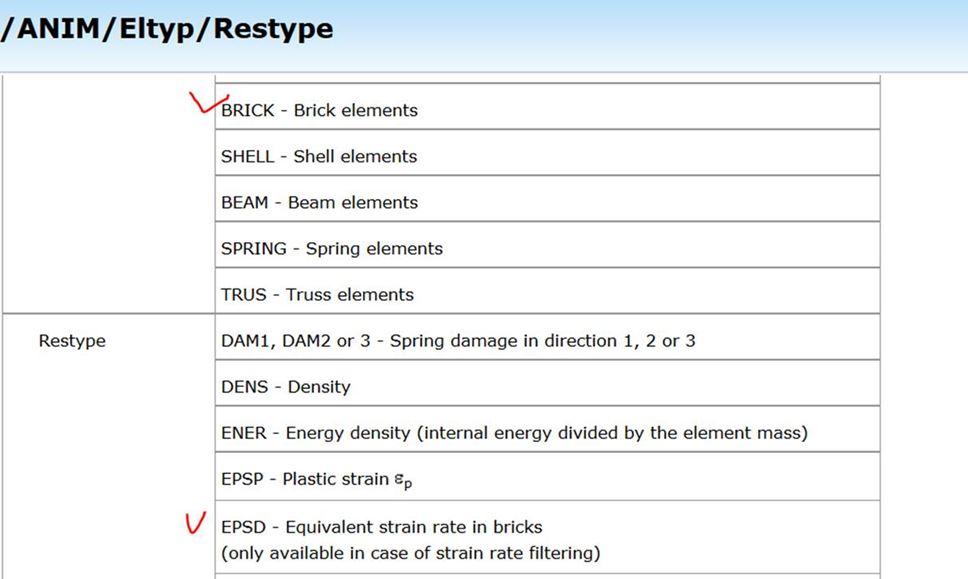Matlaw 35
Hi
I'm trying to model the dynamic response of a foam submitted to an impact.
The behavior of the foam depends of the strain rate, law 35 seems dedicated to such behavior.
In the Radioss theory manual, the expression of dP/dt is specified. First, does that represent the variation of the pressure versus the time?
If I set C2=C3=0, the material is no more viscoelastic but elastic, however the Young modulus still depend on the strain rate?
Lastly, how is the strain rate computed? I know it's the maximum of the strain rate tensor, but how is the tensor computed?
Thanks
Please answer
Find more posts tagged with
Thank you for your answers.
1) In this case, I don't really get what the pressure and its rate of change represent. How does that influence the stress, the strain and the strain rate?
2) @Rahul R, you're telling about a tabulated law (38 for instance), it's not the case here. My question is: If I set C2=C3=0, the defined material is no more viscoelastic but elastic, hence it follows Hooke's law. The only difference with a real elastic material is that the Young modulus is not a constant value, but is linearly updated w/r to the computed strain rate. Am i right?
3) ok thanks
@Rahul R
i use this command in the engine file (/ANIM/BRICK/EPSD) to observe the strain rate field, but it's always 0 whatever the velocity of the compression. How can I observe it? It,s written in your thumbnail 'only available in case of strain rate filtering'. How can I do so with Law 35?
Thank you

Hi,
Strain rate is a time dependent phenomena. The user should provide the stress-strain curves as every strain rate. The solver will consider the respective stress-strain curve at that time.
See attached thumbnail.
Regards
Rahul R
<?xml version="1.0" encoding="UTF-8"?>